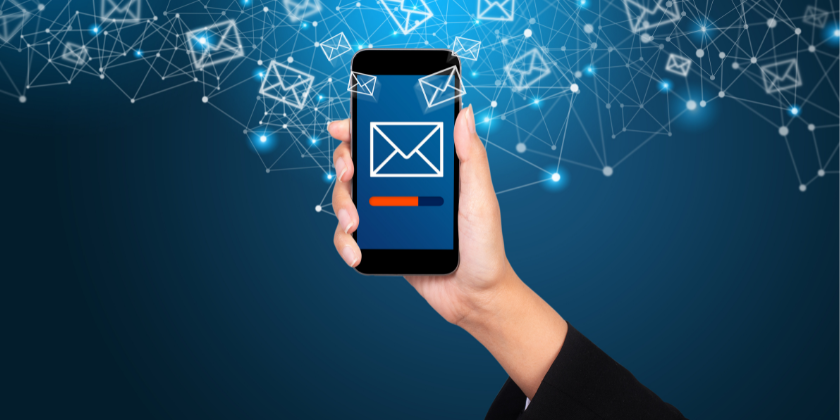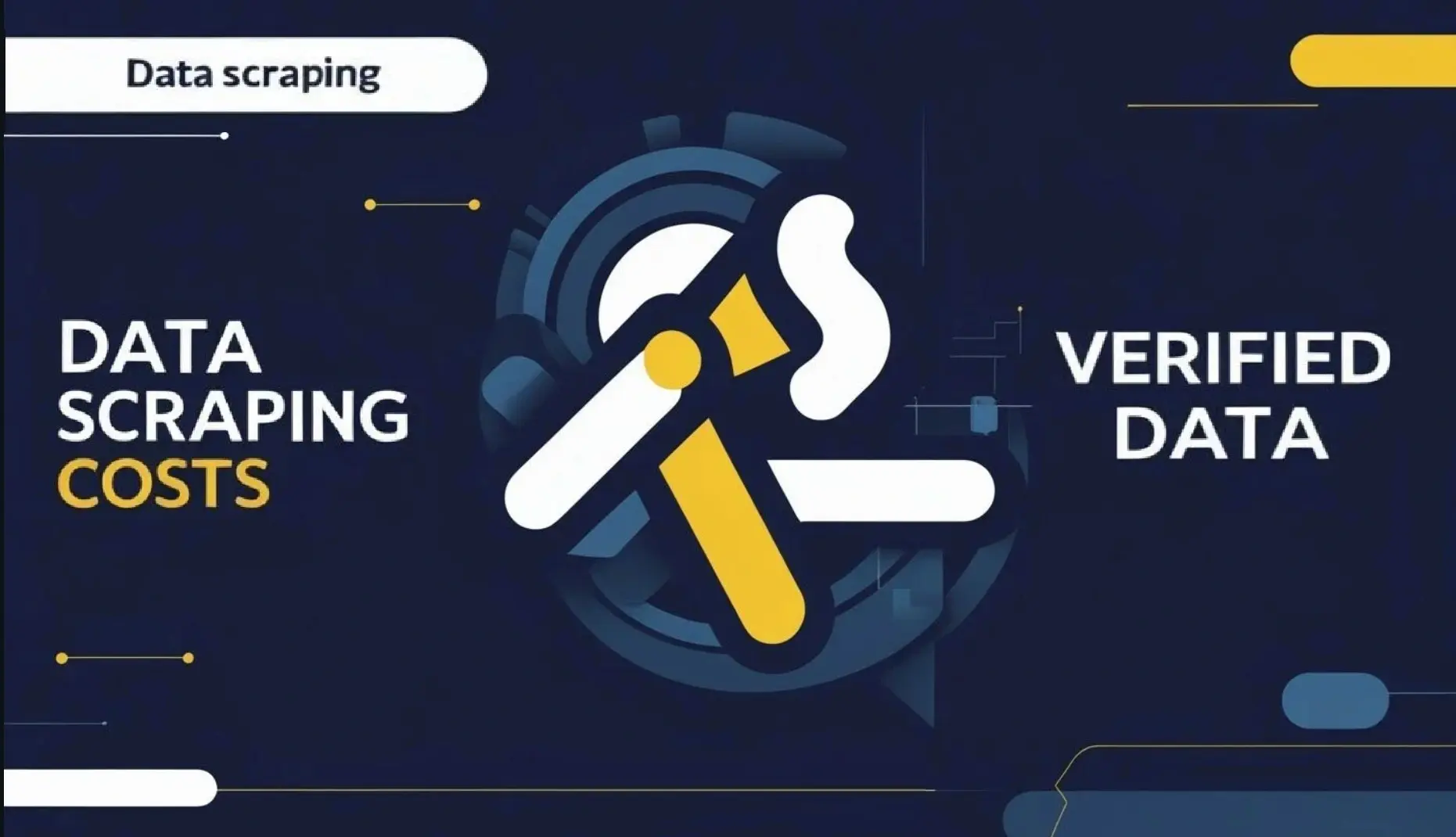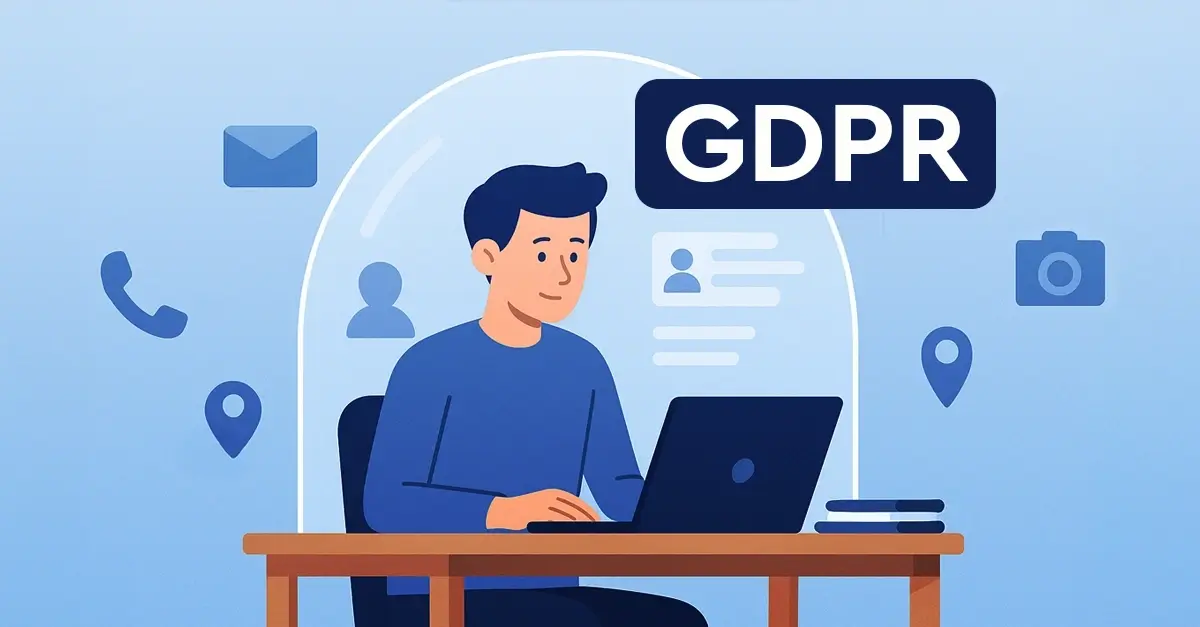In today's highly competitive business environment, effective B2B marketing (Business to Business Marketing) has become more important than ever before.
That's why in this article, we'll be sharing the most up-to-date B2B marketing best practices based on the latest trends in 2024.
What is B2B Marketing?
B2B marketing refers to the marketing strategies and tactics that businesses use to sell their products or services to other businesses (B2B comes from “business to business”). Unlike B2C marketing (“business to consumer” marketing, which targets individual consumers), , B2B marketing focuses on reaching and engaging with other businesses as customers.
Here’s a list of 11 B2B Marketing Best Practices :
1. Don’t Miss the AI Revolution in B2B Marketing
While most best practices in B2B marketing have remained for years (if not decade), sometimes new technologies bring radical changes in the marketing landscape.
Some promising technology and trends failed to have broad impact (think virtual reality, metaverse, potentially NFTs), the latest development of AI technologies have taken the business and marketing world like a storm. Google itself issued a red alert to urge its teams to dedicate more resources to AI.
So it’s worth following closely of you can integrate generative AI and AI tools (such as ChatGPT and the many other AI tools) to support your current B2B marketing actions.
2. Double Down on a Strong Brand Identity
Perhaps one of the by-product of the adoption of AI tools, one can expect content production and social media engagement to rise steadily.
If more and more businesses produce content it becomes even more important to establish and strenghen your business’ brand identity.
A strong brand identity establishes trust with customers, sets a business apart from competitors, and drives revenue growth.
To develop a strong brand identity, B2B marketers should define :
- Define Your Brand Voice and Messaging — Your brand voice and messaging should be consistent across all marketing channels and materials.
To define your brand voice and messaging, start by identifying your target audience and their needs and interests.
Then, develop a messaging framework that speaks directly to their pain points and desires. This framework should include messaging pillars, tone and language guidelines, and key messaging points. - Develop a Brand Style Guide — A brand style guide is a document that outlines the visual elements of your brand, such as your logo, colors, typography, and imagery.
It should provide guidelines for how these elements should be used across all marketing channels and materials. Your brand style guide should be accessible to all team members involved in marketing and should be regularly updated as your brand evolves. - Build a Brand Personality — Your brand should have a distinct personality that resonates with your target audience. To build a brand personality, start by identifying the core values and beliefs that guide your business.
Then, develop a tone and style that reflects these values and resonates with your target audience. Your brand personality should be reflected in all marketing channels and materials, including your website, social media, email marketing, and any other communications with customers.
One of the most important 2024 Trends in brand identity is to "Humanize Your Brand". This means that companies are focusing more on the people and values behind their brand, rather than just their products or services.
By creating a more personal and relatable brand identity, businesses can better connect with their target audience and build stronger relationships.
This trend is expected to continue to grow in importance as consumers become more conscious of the values and social responsibility of the companies they choose to do business with.
3. Identify your Target Audience and Target Decision Makers (Do your Research and Leverable Technologies)

In B2B marketing, it's important to identify your target audience and target decision makers to ensure your marketing efforts are effective.
To do so, B2B marketers should conduct research to determine the characteristics of their ideal customer, including their demographics, needs, pain points, and interests. One effective way to identify these characteristics is by creating customer personas, which are fictional representations of your ideal customer based on research and data.
While defining a target audience typically requires a lot of “manual” work, new technologies help you get a ahead of the curve.
For instance, SparkToro is a marketing tool developed by Rand Fishkin, the co-founder of Moz, that helps B2B marketers understand their audience and target them more effectively. It uses search data and social media trends to identify the content and channels that resonate with a specific target audience.
With SparkToro, B2B marketers can find new opportunities for audience engagement, identify the topics that are most relevant to their audience, and optimize their marketing efforts to reach their target market more efficiently. The tool also allows marketers to analyze their competitors' audiences and understand their content strategies.
Overall, SparkToro can help B2B marketers to create more effective marketing campaigns by providing insights into the preferences and behavior of their target audience. By leveraging this data, marketers can create content that resonates with their audience, choose the right channels to distribute that content, and optimize their campaigns to improve their ROI.
Depending on your business needs, we offer various solutions enabling you to access and extract B2B data easily. We encourage you to discover our APPS and APIS, or to contact us if you need help in determining which solution best suits your company's needs.
Additionally, B2B marketers should identify the key decision makers involved in the purchasing process and tailor their messaging to each decision maker's needs and interests.
4. Embrace Account-Based Marketing
Account-based marketing (ABM) is a B2B practice that focuses on targeting a specific set of high-value accounts with personalized marketing campaigns. ABM has become increasingly popular in recent years because it can help B2B companies to improve their marketing ROI and close more deals.
One of the key advantages of ABM is that it allows companies to target their marketing efforts on the accounts that are most likely to generate revenue. By focusing on a smaller set of accounts, companies can create more personalized marketing campaigns that resonate with their target audience. This can help to build stronger relationships with prospects, increase engagement, and ultimately drive more sales.
Another advantage of ABM is that it can help to align marketing and sales teams around common goals. With ABM, marketing and sales teams work together to identify target accounts, create relevant content, and execute personalized campaigns. This can help to break down silos and create a more integrated sales and marketing approach.
Overall, ABM can be a very effective B2B practice for companies that have a smaller set of high-value accounts. By creating personalized marketing campaigns that target these accounts, companies can build stronger relationships with prospects, increase engagement, and ultimately drive more revenue.
5. Optimize your Website for Search Engines (SEO) and Use SEO Data to Better Know your Audience

Having a website that is optimized for search engines is crucial to attracting potential customers and generating leads.
SEO optimisation usually involves the followings tasks:
- Keyword Research: Identify relevant keywords and phrases that your target audience is searching for and incorporate them into your content.
- On-Page Optimization: Optimize your website's structure, URL, title tags, meta descriptions, headers, and content for the keywords you want to rank for.
- Quality Content: Create high-quality, informative, and engaging content that resonates with your target audience and answers their questions.
- Backlinks: Build high-quality backlinks from other relevant and trustworthy websites to improve your website's authority and search engine ranking.
- Mobile-Friendly Design: Ensure your website is optimized for mobile devices as more than half of web traffic comes from mobile devices.
- Site Speed: Optimize your website's load speed for a better user experience and higher search engine rankings.
- Technical SEO: Fix any technical issues that may hinder your website's visibility to search engines, such as broken links, duplicate content, and sitemap errors.
- User Experience: Optimize your website's design and navigation to provide a positive user experience and keep visitors engaged.
By following these SEO best practices, you can improve your website's visibility in search engines, drive more traffic to your website, and ultimately, increase your business revenue.
Having a website that is optimized for search engines is crucial to attracting potential customers and generating leads. But there are other benefits you can gain from doing SEO work :
- Gain insights into your target audience's interests, needs, and pain points. If you know what your audience search for, you aslo know what to pitch them and how to address their actual needs. This can help you to create more relevant and engaging content, products, and services.
- Competitor Research: SEO allows you to analyze your competitors' online presence, identify their strengths and weaknesses, and find opportunities to differentiate your brand. You can also use SEO tools to monitor your competitors' keywords, backlinks, and content strategies.
- Brand Awareness: SEO can help to improve your brand's visibility and awareness in search engines, which can lead to increased brand recognition and recall.
6. Create Helpful Marketing Content (Do Not Rely Only on AI or Offshore Writers)
Developing compelling educational content is essential for attracting and engaging potential customers.
Educational content includes whitepapers, eBooks, webinars, and other resources that provide valuable insights and solutions to your audience's pain points. It is also a very good method to have a first contact with your audience. By collecting email addresses to download resources or to receive newsletters you can generate leads easily.
To develop compelling educational content:
- Identifying the topics and pain points that are most relevant to your target audience.
- Conduct research and gather data to support your content.
- Use a mix of visual and written content to make your content more engaging and accessible.
- Make your content easy to access and share by hosting it on your website or social media channels and promoting it through email marketing and other channels.
Today, AI tools can help you produce quality content (just like offshore copywriters were used to source cheap content), do not rely solely on AI. Compelling content is the result of your experience and your ability to add your voice to your content.
To this end, bear in mind that Google launched in 2022 a so-called the “helpful content update” that's part of “a broader effort to ensure people see more original, helpful content written by people, for people, in search results. Below is more about the update and things creators should consider.”
Here are questions Google recommands show to answer when producing content :
- Do you have an existing or intended audience for your business or site that would find the content useful if they came directly to you?
- Does your content clearly demonstrate first-hand expertise and a depth of knowledge (for example, expertise that comes from having actually used a product or service, or visiting a place).
- Does your site have a primary purpose or focus ?
- After reading your content, will someone leave feeling they've learned enough about a topic to help achieve their goal?
- Will someone reading your content leave feeling like they've had a satisfying experience?
7. Create Compelling Case Studies to Demonstrate your Value Proposition
Creating case studies is an effective way to showcase your company's expertise and success stories to potential customers. Case studies provide real-world examples of how your company has helped other businesses overcome their challenges and achieve their goals.
To create a compelling case study:
- Identifying a successful project or customer engagement that showcases your company's strengths and expertise.
- Gather data and testimonials from the customer to support your case study, and present the information in a clear and concise format that is easy to understand.
- Highlight the specific results and benefits that the customer achieved by working with your company.
- Promote your case study through your website, email marketing, and other channels to reach a wider audience.
8. Build Relationships and Nurture Leads with Email Marketing

Email marketing remains one of the most effective ways to communicate with potential customers and nurture leads.
To effectively utilize email marketing, start by segmenting your email list based on your target audience's interests and behaviors. This will allow you to tailor your messaging and content to specific segments, making your emails more relevant and engaging.
Use a mix of educational content, promotional offers, and personalized messaging to keep your audience engaged and interested.
Design your emails to be visually appealing and easy to read, with clear calls to action that encourage recipients to take action.
9. Leverage Social Media Marketing to Amplify your Brand Reach
Social media channels are an important tool for B2B marketers to reach and engage with their target audience.
To effectively leverage social media :
- Identifying the social media channels that are most relevant to your target audience and focus on building a strong presence on those platforms.
- Develop a content strategy that is tailored to each platform, using a mix of educational content, promotional offers, and engaging visuals to capture your audience's attention. Integrate the AI video generator tool to craft captivating video content that resonates with your audience, ensuring your message is not only seen but also heard.
- Use social media to interact with your audience, responding to comments and messages and building relationships with potential and existing customers.
- Use social media advertising to reach a wider audience and target specific segments based on their interests and behaviors.
Influencer marketing is another way to leverage social media channels for B2B marketing. This involves partnering with influential individuals in your industry who have a large following on social media to promote your brand or product.
These influencers can share your educational content, provide reviews or testimonials, or even create their own content featuring your product.
This can help to increase your reach and credibility on social media, as well as generate leads and conversions. When selecting influencers to work with, it's important to consider their relevance to your target audience and the alignment of their values with your brand.
10. Save Time and Improve Results with Marketing Automation

Marketing automation is a powerful tool that can help B2B marketers streamline their lead generation and lead nurturing processes. By automating repetitive tasks such as email campaigns, social media posts, and lead scoring, marketing team can save time and improve the efficiency of their marketing efforts.
For example, a B2B company might use marketing automation to create a series of targeted email campaigns that are triggered based on a lead's behavior or stage in the buyer's journey. The company could use lead scoring to prioritize leads based on their level of engagement and potential value, and then automatically send personalized emails to each segment of leads based on their interests and behaviors.
Marketing automation can also be used to nurture leads through the sales funnel by sending relevant content at each stage of the buyer's journey, from awareness to consideration to decision. By automating these processes, B2B marketers can build stronger relationships with their leads and increase the likelihood of converting them into customers.
11. Measure and Analyze your Results to Continuously Improve your Strategies
Measuring and analyzing your results is a crucial step in B2B marketing. It allows you to understand what's working and what's not, and make data-driven decisions to optimize your marketing efforts.
This best practice is relevant for all other practices mentioned in this article, as it's important to analyze the performance of each tactic to determine what's effective and what needs improvement. For example, by analyzing the performance of your email campaigns or social media posts, you can identify which messages or visuals resonate with your audience and adjust your strategy accordingly.
To effectively measure and analyze your results, start by setting specific goals and KPIs for each tactic or campaign. Use analytics tools to track your progress and regularly review your data to identify trends and patterns. Use A/B testing to compare the performance of different messages or visuals and continually refine your approach.
Overall, measuring and analyzing your results is essential for B2B marketers to optimize their marketing efforts and drive better results. By continuously analyzing your data, you can refine your tactics and campaigns to better engage with your target audience and generate more leads and conversions.
FAQ - Best Practices in B2B Marketing
What is a value proposition in B2B marketing?
A value proposition is a clear statement that explains how your product or service solves a specific problem or meets a need for your audience. It should highlight the unique benefits and advantages of your offering compared to the competition.
What are some digital channels I can use for B2B marketing?
Some digital marketing channels to consider for B2B marketing include social media platforms like LinkedIn and Twitter, email marketing, search engine optimization (SEO), pay-per-click (PPC) advertising, content marketing, and webinars or virtual events.
How can I measure and analyze my B2B marketing results?
To measure and analyze your B2B marketing results, use tools like Google Analytics, marketing automation platforms, and CRM systems to track key metrics such as website traffic, lead generation, conversion rates, and customer retention. Use this data to identify areas for improvement and refine your marketing strategies over time.
What are some common mistakes to avoid in B2B marketing?
Some common mistakes to avoid in B2B marketing include failing to understand your audience, not having a clear value proposition, neglecting to build strong customer relationships, using outdated or irrelevant marketing tactics, and not measuring and analyzing your results to improve your strategies.
How can I ensure that my B2B marketing efforts are targeting the right audience?
To ensure that your B2B marketing efforts are targeting the right audience, it's important to conduct market research and develop buyer personas to understand the needs, pain points, and preferences of your ideal customers. You can then use that information to tailor your marketing messages and content to resonate with those specific audiences.
How can I measure the ROI of my B2B marketing campaigns?
To measure the ROI of your B2B marketing campaigns, you can track metrics such as website traffic, leads generated, conversion rates, and revenue generated. You can also use marketing automation tools and customer relationship management (CRM) software to track leads and customer interactions throughout the sales funnel. By regularly analyzing these metrics and comparing them to your goals and KPIs, you can determine the effectiveness of your campaigns and make adjustments as needed.
What are some common challenges in B2B marketing?
Some common challenges in B2B marketing include identifying the right target audience, generating high-quality leads, developing a strong brand identity, and measuring the effectiveness of marketing efforts. Other challenges may include keeping up with rapidly changing marketing technologies and strategies, competing with other businesses in crowded markets, and adapting to changes in customer behavior and preferences.





Comments